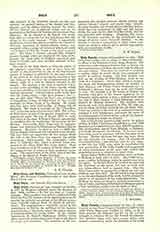

Holy Family, ARCHCONFRATERNITY OF THE.—This archconfraternity owes its origin to Henri Belletable, an officer in the Engineers’ Corps, Liege, Belgium. His intercourse with workmen inspired him to labor for their amelioration, which he saw could only be effected through religion. Therefore, he resolved to establish a society, which he would divide into companies of twelve m military fashion. The first reunion was held on the evening of Whit-Monday, 1844, in the room of a carpenter. When their numbers outgrew the room, the Redemptorists placed an oratory at their disposal, and Father Victor Dechamps (q.v.), Belletable’s director, took up the work and became its soul. He brought it to the notice of Bishop von Bommel, who gave it his formal approval on February 13, 1845, erected it into a confraternity with the title of Holy Family, April 7 following, and remained its lifelong promoter. The statutes then drawn up were later presented to Pius IX, who approved them by Briefs dated 20 and April 23, 1847, raised the society to the rank of an archconfraternity, enriched it with indulgences, and made the rector of the Redemptorists‘ Church of Our Lady of the Immaculate Conception, Liege, its director.
The confraternity spread rapidly and at its golden jubilee, in 1894, it had been established in over 1300 churches, and numbered more than 400,000 members. The development spread from Belgium to Holland, and finally throughout the Church. It has been more than sixty years in existence and has lost none of its fervor. Besides divisions for men and boys, there are also branches for women. Pius IX considered this confraternity a providential work for our times, as did also Leo XIII, who, when he established his own association of the Holy Family and suppressed all other associations of the same title, wished this archconfraternity to continue its good work.
Henri-Hubert Belletable, its founder, was b. at Venlo in Holland, April 8, 1813; d. 1854. After 1830 he became a soldier in Belgium, where he quickly rose from the ranks. In his last illness he insisted on receiving the Viaticum on his knees, but was so weak that two fellow-officers had to support him. After his Holy Communion he prayed fervently for his wife and children, and then died. He did not live long enough to see the development of his work, but his memory is sacred to all members of the archconfraternity. In Holland the members erected a splendid monument to him at Venlo, and those of Holland and Belgium placed a bust in Carrara marble over his tomb at Huy.
J. MAGNIER

